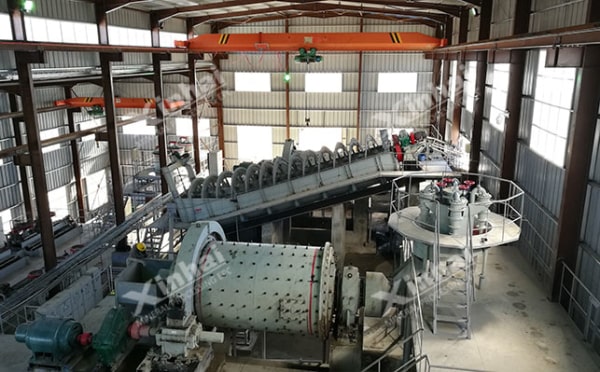Poor fine and miscellaneous iron ores are hematite, siderite, limonite, oolitic hematite ore, high phosphorus iron ore and polymetallic paragenetic iron ore, among which siderite and limonite are common. Next, we will introduce the beneficiation process of these two minerals.

Siderite is a common carbonate mineral, which presents granular, earthy or dense massive aggregates. The iron content of siderite is low, the theoretical iron grade is only 48.02%, but it often forms isomorphic minerals with Mn2+, Mg2+, such as magnesium siderite, manganese siderite, magnesium manganese siderite, etc., so its iron content often fluctuates in the range of 43.47%~48.20%.
The common beneficiation methods of siderite include magnetization roasting, gravity separation, high intensity magnetic separation and flotation.
Magnetization roasting: it refers to the process of physical and chemical reaction in the corresponding atmosphere when the ore or material is heated to a certain temperature. Through the magnetization roasting process, siderite can be enriched more easily. Because, after the siderite is roasted in neutral or weak reducing atmosphere, carbon dioxide will be decomposed from the ore, which can enhance the magnetism of iron minerals, while the magnetism of gangue minerals remains unchanged. Therefore, it can effectively use its magnetic difference to separate iron minerals and improve the iron ore grade.
Gravity separation: the separation is carried out according to the difference in density, particle size, shape, etc. between mineral particles and the difference in movement speed and direction in the water medium, while the proportion of siderite is small, so heavy suspension ore dressing or jigging ore dressing can be used.
High intensity magnetic separation: use different magnetic permeability of minerals to make them pass through magnetic field to absorb magnetic minerals and collect them through aggregate hopper. The specific susceptibility of siderite is (35~150) × 10-9m3/kg, average 116 × 10-9m3/kg, although the magnetism is weak, it can be separated by strong magnetic separation.
Flotation: Siderite flotation is mainly for the flotation of mixed iron minerals containing siderite, mainly for the separation of weakly magnetic iron ore. The iron minerals are separated by flotation operations based on the surface chemical properties, hydrophobic flocculation and surface adsorption characteristics of siderite.
Limonite is the general name of a series of hydrous ferric hydroxide and argillaceous substances. Limonite is not a fixed chemical composition, but a mixture of several minerals. Therefore, its iron content is not fixed, ranging from 48% to 62.9%.
It is yellow, brown, brown black - reddish brown. Most limonite ores contain harmful impurities such as sulfur and phosphorus. Its magnetism is relatively weak, particle size is uneven, surface argillization is serious, and hydrophobicity is poor.
Common beneficiation methods of limonite include gravity separation, high intensity magnetic separation, flotation and selective flocculation flotation.
Gravity concentration: spiral chute is mainly used for preconcentration and shaking bed for cleaning to improve iron grade. It is mainly used for fine limonite.
High intensity magnetic separation: it is an economical and simple process for separating limonite. High gradient magnetic separators are often used to separate limonite, which is commonly used for the separation of coarse limonite.
Flotation: It mainly includes positive flotation and reverse flotation. Generally, positive flotation is not used alone, but combined with strong magnetic separation process for comprehensive separation, while reverse flotation uses the combination of anion and cation for single flotation operation. This process is mainly aimed at simple limonite. Desliming is carried out first, and then rough separation and scavenging are carried out.
Selective flocculation flotation: it refers to selective flocculation of starch, humic acid salt, etc., and removal of silicate minerals through desliming or reverse flotation process.
The above are common beneficiation methods for siderite and limonite. Although this kind of mineral is relatively difficult to beneficiate, the comprehensive utilization value of selecting a suitable process is considerable. In order to effectively select a suitable process flow, I suggest to find a professional beneficiation expert to conduct beneficiation test analysis on its mineral properties, and then customize a process flow in line with the actual situation according to the analysis results.